No matter how dubious the reasoning behind monetary policy, the smartest posture for the trader is to align oneself with the primary dynamic that is moving prices.
As we reach the end of an already eventful week, and there is still the thrill of an NFP report later today to come, I'll simply remark that, no matter how dubious the reasoning behind monetary policy, the smartest posture for the trader is to align oneself with the primary dynamic that is moving prices.
At present the very clear articulation by Fed chairman Bernanke is that he wants higher asset prices and as the saying goes "Don’t Fight the Fed". There will be other occasions when one can debate the merits of the Fed’s chosen path, but rose tinted spectacles are definitely the flavour du jour.
The S&P 500 has a 1228 target to complete the 62% retracement from multi-year high/lows. Given the new normal as far as the Fed as ultimate guarantor of higher prices one should even be looking at the next major fibonacci target at 78.6% which would equate to 1380. 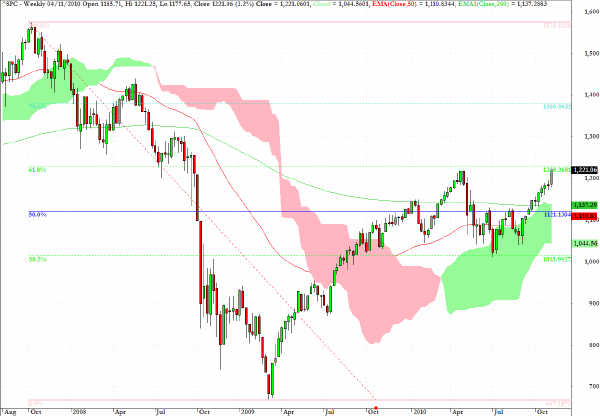
The leading 100 Nasdaq stocks have been in the vanguard of the recent advance and have now more or less reached back to the 2008 high.
In addition to the help from the Fed, earnings have been supportive for this elite group of companies and it is worth stating one of the less commented on benefits of the weak US dollar policy from the perspective of US domiciled multi-nationals.
Overseas sales are often earned in currencies which are all appreciating against the dollar, and when converted into the revenue line on a P&L for a corporation which uses the USD as its base currency, the amplification of good sales performance is further significantly enhanced by currency conversions.
A weak dollar policy has many benefits to the US until the rest of the world decides that they no longer have faith in the dollar as the global reserve currency...but that’s another story for another day. 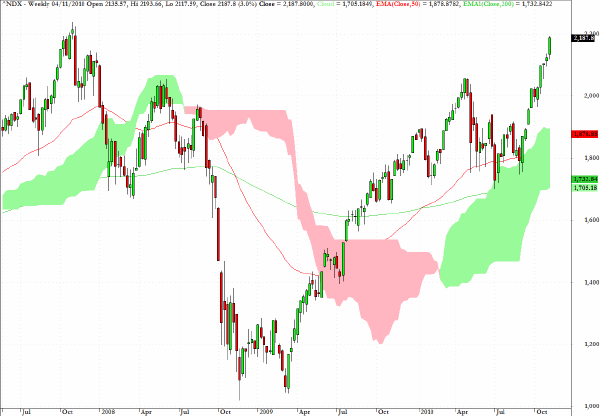
The 30-minute chart for GBP/USD shown here yesterday reveals a negative drift in sterling during the last 12 hours or so but the area highlighted should act as an intraday support level. 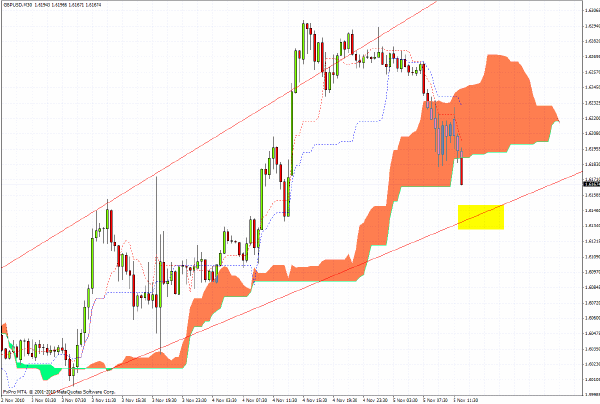
It was interesting to read comments from various financial luminaries outside the US in relation to the QE2 decision. One of the best was the one below.
BERLIN (MNI) - German Finance Minister Wolfgang Schaeuble on Friday criticized the US Federal Reserve for its new round of quantitative easing, arguing it has the same effect on the dollar as the Chinese government’s currency policy has on the yuan.
"At the moment, from a European viewpoint, one could get the impression that the U.S. is doing through other means what it is reproaching China for," Schaeuble said at a conference in Berlin.
"One could get the idea that the instruments are different but the goal is the same, and the one who suffers are clearly...to a certain degree the Europeans," the minister argued.
The euro’s foreign exchange rate has risen markedly against the dollar due to the Fed’s policy of pumping massive liquidity into market. After gaining two cents on the initial announcement Wednesday, the single currency has remained firm.
"With all due respect, my impression is that the US is helpless," Schaeuble said. "The problem of the US is not a lack of liquidity and the decision by the Fed to add some $600 billion will not solve the problem," he reckoned.
Meanwhile the DAX is racing higher and the 78% fibonacci target level is shown on the weekly chart. 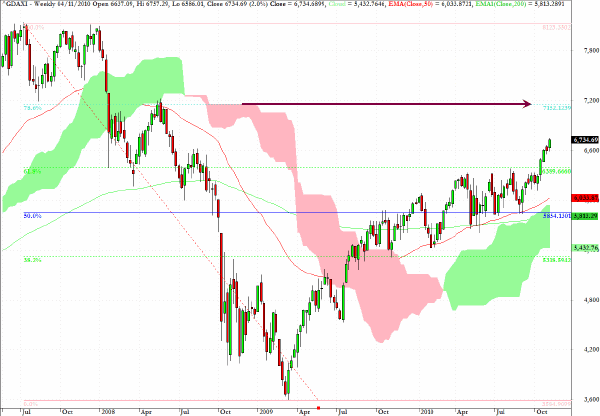
EUR/CHF is a cross rate worth following as it indicates directional tendencies of the euro, not from the perspective of the US dollar but from the viewpoint of the safe haven currency the Swiss Franc.
As can be seen on the daily chart below, the euro has retreated to a trend line which, if it doesn’t provide support, would be an indication that even if EUR/USD has further to go the cross rates for EUR/CHF and also EUR/JPY may be plays on the short side to counter a long EUR/USD stance. 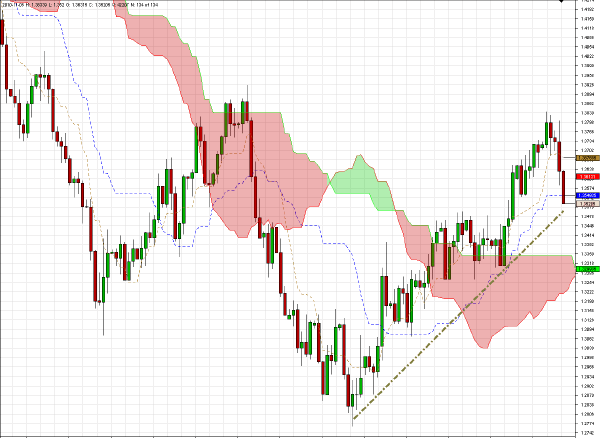
The sector fund DBV, a proxy for the FX carry trade, shows that the high yielding currencies are clearly in favor in the scramble for yield and the weekly chart shows the potential for a substantial break away if there is further continuation to the bullish chart formation. 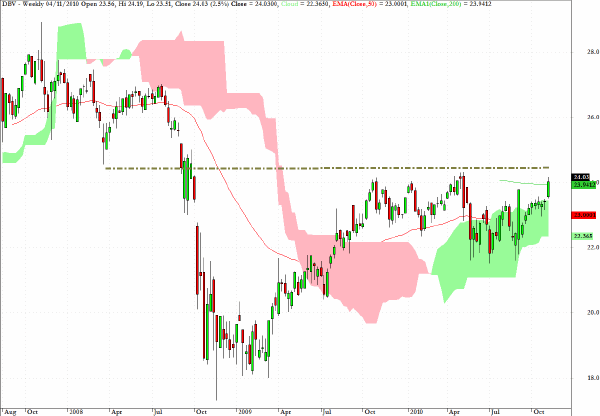
XME is one of the preferred sector funds on the long side, and it is worth noting that the chart pattern resembles that seen above for DBV. 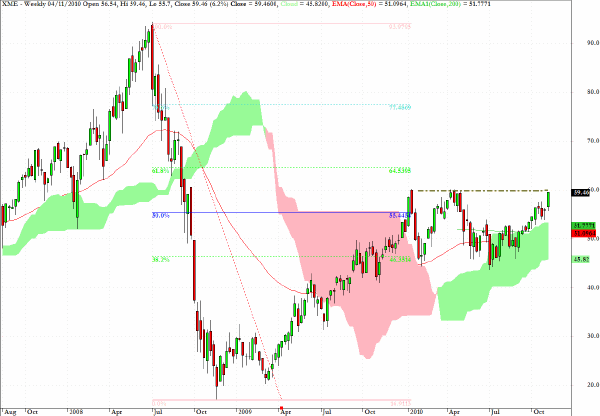
Clive Corcoran is the publisher of TradeWithForm.com, which provides daily analysis and commentary on the US stock market.